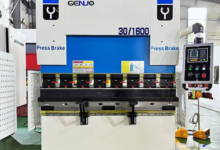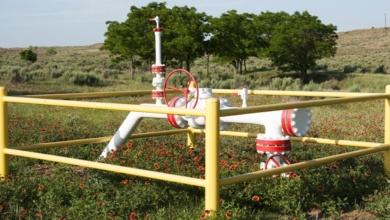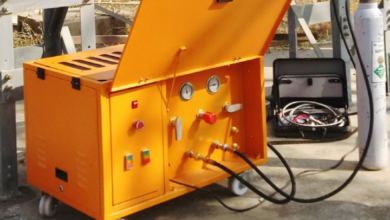Improving Efficiency in Confectionery Production

Introduction
In the competitive confectionery industry, minimizing product loss and maintaining high standards of quality are critical for profitability. Pigging systems confectionery offer a practical solution for recovering residual products from pipelines, reducing downtime, and ensuring consistent output. This article explores their role, benefits, and best practices for confectionery production lines.
Challenges in Confectionery Production Lines
Confectionery manufacturers often face several operational challenges:
- Product Residue: Chocolate, caramel, or syrup often remains in pipelines after processing.
- Cross-Contamination: Switching between different flavors or colors can compromise product quality.
- Cleaning Requirements: Manual cleaning of pipelines is labor-intensive and time-consuming.
- Flow Issues: Changes in viscosity and temperature can affect product movement and line performance.
Addressing these issues is essential to maintain operational efficiency and reduce waste.
See also: Peer to Peer Lending App Development: Transforming the FinTech Landscape
How Pigging Systems Confectionery Works
Pigging systems confectionery involve using specialized pigs that travel through pipelines to push out remaining product. These pigs can pigging systems confectionery be made from foam, rubber, or food-grade materials suitable for the specific confectionery product. They are inserted into the pipeline and propelled by air, liquid, or mechanical means, recovering as much residual product as possible.
Advantages of Using Pigging Systems in Confectionery
- Enhanced Product Recovery: Maximizes the amount of product retrieved from pipelines.
- Faster Product Changeovers: Reduces downtime when switching flavors or batches.
- Minimized Cleaning Effort: Decreases the need for manual cleaning and associated labor costs.
- Consistent Quality: Reduces cross-contamination and ensures product uniformity.
Types of Pigs Used in Confectionery Systems
Foam Pigs
Soft foam pigs are flexible and suitable for pipelines carrying viscous or semi-solid products like caramel or chocolate.
Rubber Pigs
Firm rubber pigs provide thorough cleaning and are suitable for thicker or sticky confectionery products.
Custom Pigs
For complex pipeline layouts or high-value ingredients, custom-designed pigs can optimize recovery and maintain hygiene standards.
Selecting the Right Pigging System
Material Safety
The pig material must be food-grade and compatible with the confectionery product to avoid contamination.
Pipeline Design
Consider pipeline length, bends, and diameter changes to choose the correct pig type and insertion method.
Automation Level
Automated pigging systems enhance efficiency, especially for high-volume production facilities, while manual systems may suffice for smaller operations.
Best Practices for Implementation
Initial Assessment
- Inspect pipelines for obstructions or damage.
- Verify compatibility of all valves and fittings for pigging operations.
- Determine product types, viscosity, and flow conditions to select suitable pigs.
Operational Guidelines
- Schedule pigging intervals according to production cycles.
- Monitor pig movement with sensors or manual checks.
- Keep spare pigs on hand to avoid operational delays.
Maintenance Considerations
- Regularly inspect pigs for wear and replace as necessary.
- Conduct periodic pipeline inspections to prevent buildup that could hinder pig movement.
- Ensure cleaning and maintenance protocols are in line with food safety regulations.
Applications in the Confectionery Industry
Chocolate and Caramel Lines
Efficiently recovers residual chocolate or caramel, minimizing waste and reducing cleaning time.
Syrup and Liquid Flavor Lines
Maintains product consistency and reduces contamination risk during flavor changes.
Specialty Confectionery Products
Used for high-value or delicate products where product recovery and hygiene are critical.
Economic Benefits
Cost Savings
Recovering leftover product reduces raw material waste and cleaning labor costs.
Increased Productivity
Minimizes downtime between batches, allowing more production cycles per day.
Environmental Impact
Less product waste results in reduced disposal costs and better sustainability performance.
Safety Benefits
Reduces manual handling of sticky or hot materials, lowering the risk of workplace accidents.
Challenges and Solutions
- Pig Wear: Regular inspection and replacement prevent operational issues.
- Pipeline Complexity: Custom pig designs and careful planning ensure smooth navigation through bends and junctions.
- Viscosity Changes: Adjust pig speed or propulsion method to handle varying product viscosities.
Future Trends
- Automation and IoT: Real-time monitoring of pig movement and pipeline conditions.
- Smart Pigging: Predictive maintenance and automated scheduling improve efficiency.
- Sustainable Materials: Development of biodegradable and food-safe pig materials.
- AI Optimization: Using AI to schedule pigging based on production demand and flow patterns.
Conclusion
Pigging systems confectionery provide an effective way to enhance production efficiency, reduce waste, and maintain high product quality. Implementing a well-designed pigging system ensures faster changeovers, minimizes cleaning requirements, and improves overall productivity. By adopting modern pigging solutions, confectionery manufacturers can achieve better cost control, environmental sustainability, and consistent product quality, securing a competitive advantage in the market.







